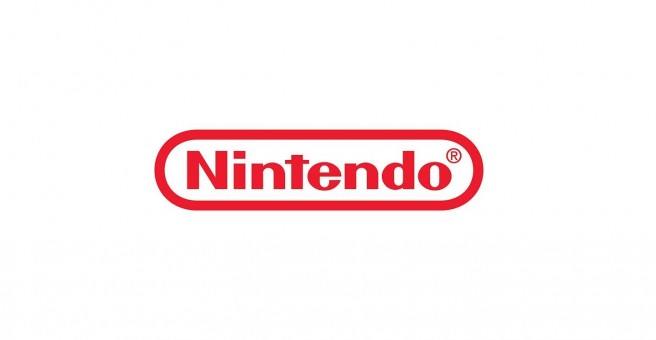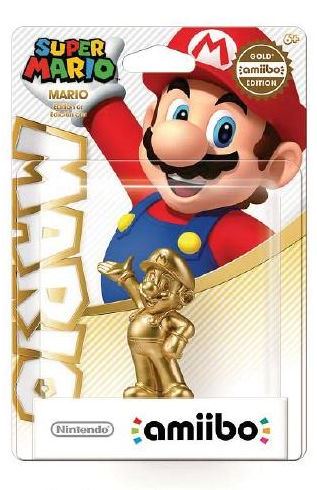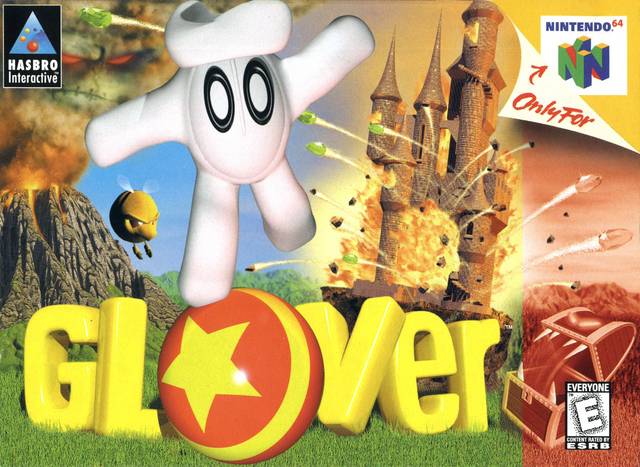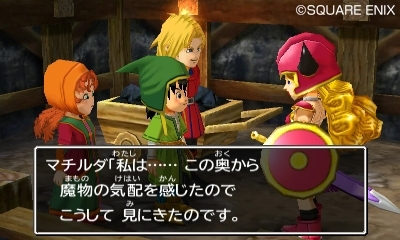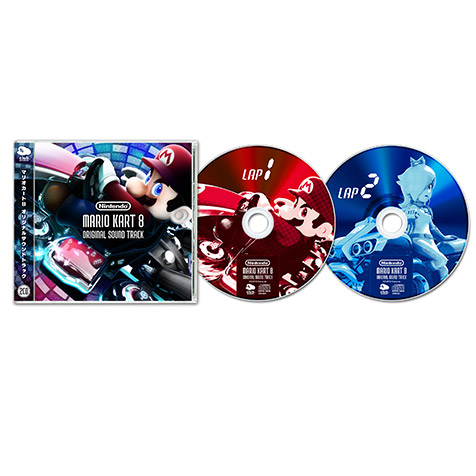Nintendo attending PAX East 2015, lineup confirmed
Posted on 9 years ago by Brian(@NE_Brian) in 3DS, General Nintendo, New Nintendo 3DS, News, Wii U | 2 Comments
Nintendo announced today that the company will be represented at PAX East 2015 in Boston, Massachusetts. Fans will be able to go hands-on with the New 3DS XL and several games.
Splatoon’s E3 2014 demo will be playable at the Nintendo booth (#4072). The same goes for Code Name: S.T.E.A.M., which will also be featured in stage presentations. Other playable titles include Monster Hunter 4 Ultimate, The Legend of Zelda: Majora’s Mask 3D, Xenoblade Chronicles 3D, and Puzzle & Dragons: Super Mario Bros. Edition. GungHo Online Entertainment will have its own booth (#8092) where fans can try out Puzzle & Dragons Z and Puzzle & Dragons: Super Mario Bros. Edition.
Scott Moffitt, Nintendo of America’s executive vice president of Sales & Marketing, said of today’s PAX announcement:
“We love giving our fans an opportunity to check out our latest products at PAX events. The newly released New Nintendo 3DS XL is sure to be popular with the many show-goers looking for StreetPass tags, and Splatoon will let attendees get their first hands-on experience with one of the year’s most creative games.”
PAX East 2015 will take place between March 6 and March 8 at the Boston Convention and Exhibition Center at 415 Summer St.
Source: Nintendo PR
More: PAX East 2015, top
Gold Mario amiibo will be sold in Walmart stores, pre-orders apparently not happening
Posted on 9 years ago by Brian(@NE_Brian) in General Nintendo, News | 12 Comments
Update: Walmart’s tweets have now been pulled. Make of that what you will!
A tweet from Walmart Canada officially confirms the existence of Nintendo’s gold Mario amiibo, though it was pretty much a sure thing at this point.
In one tweet, the retailer says that the figure will be sold in stores. A release date still hasn’t been determined.
@whosfourm Thanks for asking! We are getting the gold Mario amiibo in stores but we don't have a date yet.
— Walmart Canada (@WalmartCanada) February 25, 2015
A second tweet from Walmart Canada seems to confirm that there won’t be pre-orders for the gold Mario amiibo:
@AmiiboLover Hi there. We're not having a pre-sale for the gold Mario amiibos.
— Walmart Canada (@WalmartCanada) February 25, 2015
I imagine that things won’t be any different for Walmart stores in the United States. However, if we hear otherwise, we’ll be sure to let you know.
The story of Glover 2’s cancellation
Posted on 9 years ago by Brian(@NE_Brian) in General Nintendo, News | 7 Comments
Glover 2 was originally supposed to happen. Interactive Studios, the developer of the first game, was originally signed on to create the sequel. But as you may know, Glover 2 ended up seeing cancellation.
Believe it or not, Glover 2’s cancellation came about due to the first title. Publisher Hasbro ended up ordering 300,000 units since Nintendo had a special on N64 cartridges at the time. Rather than going for 150,000 units – a standard amount which was also suggested by Interactive Studios – Hasbro went with 300,000 units at a slightly reduced cost.
More: Glover 2, Hasbro, Interactive Studios
Saints Row 1 design director was working on an open-world Wii U game in partnership with Nintendo
Posted on 9 years ago by Brian(@NE_Brian) in General Nintendo, News | 12 Comments
Chris Stockman, the design director of Saints Row 1, is said to have been making an open-world game for Wii U. The project was being made in partnership with Nintendo.
Unfortunately, Stockman’s title was cancelled one day before production kicked off. It’s unknown why this occurred, though Nintendo’s management apparently pulled out at the last minute.
All of this information comes from Unseen64’s Liam Robertson. The site consistently digs up information on cancelled game-related projects.
More: Chris Stockman, top
Square Enix CEO aware of overseas Dragon Quest demand, has ideas about how to make it successful in the west
Posted on 9 years ago by Brian(@NE_Brian) in 3DS, General Nintendo, News | 18 Comments
Square Enix CEO Yosuke Matsuda sat down with French website Gamekult for a lengthy chat. Among the various topics discussed was the company’s handling of Dragon Quest overseas.
Matsuda acknowledged that a number of Dragon Quest games were not released in France – and in turn, the west as a whole. However, he added that the Dragon Quest team has some ideas about how to make the series successful overseas. He asked fans to look forward to upcoming announcements and to a “bright future” for the series.
Square Enix actually ended up announcing Dragon Quest Heroes for North America and Europe earlier today. But you do have to wonder if we still have any sort of chance of seeing any of franchise’s other recent releases here. Dragon Quest VII, Dragon Quest Monsters: Terry’s Wonderland 3D, Dragon Quest Monsters 2, Dragon Quest Heroes: Rocket Slime 3, and Dragon Quest X have all stayed in Japan.
More: Dragon Quest, interview, Square Enix, Yosuke Matsuda
Several rewards coming to Club Nintendo Japan – Mario Kart 8 soundtrack and more
Posted on 9 years ago by Brian(@NE_Brian) in General Nintendo, News | 18 Comments
A bunch of rewards are being added to Club Nintendo Japan over the next few months. The lineup is quite impressive, as items include the Mario Kart 8 soundtrack, lots of t-shirts, and more.
Those on Club Nintendo Japan will be able to nab the following rewards over the next few months:
3DS game card case – February 26
Fierce Deity puzzle – March 5
Various shirts (Zelda, Bloober, SNES, Game & Watch, more) – March 11
Wii Wheel (Mario) – March 11
Wii Wheel (Luigi) – March 11
Wii Wheel (Yoshi) – March 11
Wii Wheel (Peach) – March 11
Mario Paper Model – March 18
Nintendo Sound Selection Mario & Peach – March 18
Matching Card Game – March 18
Mario Kart 8 soundtrack – end of April
Nikki’s Travel Quiz – end of April
Dot Mario tissue cover – end of April
Pouches (Animal Crossing, Mario) – May
You can find photos of the different rewards in the gallery below.
More: Club Nintendo, Japan, top
USAopoly coming out with Yahtzee: The Legend of Zelda, TACDEX: Super Mario this year
Posted on 9 years ago by Brian(@NE_Brian) in General Nintendo, News | 2 Comments
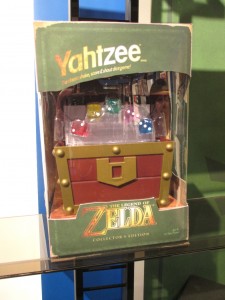
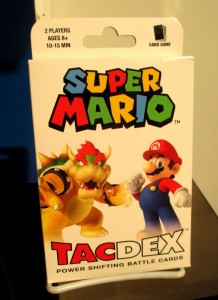
USAopoly has two more Nintendo-related products coming out this year.
The first, Yahtzee: The Legend of Zelda, is arriving in late spring. It features a treasure chest dice cup and multi-colored dice. No word on pricing just yet.
TACDEX: Super Mario is also arriving this winter. USAopoly Marketing Manager Cindy Saylor told ICv2:
“This is the only Super Mario card game out there. It’s very similar to playing War, but it has a battle marker that allows you to suddenly change the game dynamics from ‘win with a high card’ to ‘win with a low card.’”
TACDEX: Super Mario is intended for two players ages 8 and up. Pricing is set at $9.95.
Thanks to Yoko for the tip.
More: USAopoly
Iwata believes the demand for entertainment is increasing, need to maintain value of gaming content
Posted on 9 years ago by Brian(@NE_Brian) in General Nintendo, News | 5 Comments
Mr. Iwata, how do you think the demand for entertainment will change from now on? Earlier you mentioned consumer behavior, and the way consumers collect and receive information has changed. For the last few years, I think that for the overall entertainment industry, various key trends have transitioned. I would like to know how you think the ultimate demand is changing.
I think that the demand itself for entertainment is increasing rather than decreasing. Now that smart devices are a means of entertainment consumption for a number of consumers, I think the total time and consumption of entertainment is increasing. However, the tough issue for this platform is that the platform holders are not so interested in maintaining the high value of the content and instead feel that the cheaper the content, the better or even that the content should be free. On this point, I can empathize with Mr. Kawakami, the chairman of DWANGO Co., Ltd., as he often uses the expression to describe the situation of the content for smart devices with “the eggs are on sale at the supermarket.”
In the music and video industries, they made more profits by selling content before, but, because of the digitalization trend, it has become much more difficult to make profits by just selling the content. For example, artists whose CDs sold over one million copies in the past can sell less than one-tenth of them now. It is said that whether they can maintain the revenue or not now is up to the number of people who attend their concerts and other events. Consumers spend money on one-time events like concerts, but once they have regarded as a norm that they can digitally obtain content free of charge, we cannot easily change their minds regarding content value. As for video content, once services offering a library of tens of thousands of videos for only a few hundred yen per month become mainstream, DVDs will not sell as they did in the past. I have heard a Hollywood movie producer say that profit structures for movies have changed, and it is difficult to expect profits from selling DVDs.
More: top
Iwata on Nintendo’s marketing approach, western New 3DS launch timing, more
Posted on 9 years ago by Brian(@NE_Brian) in General Nintendo, News | 36 Comments
My question is about the company’s internal marketing structure. It seems that New Nintendo 3DS has had a good launch in the U.S. and Europe, but focusing on the year-end sales season, I get the impression that Nintendo could have done more. For example, Nintendo may have had more of the chance if the launch of New Nintendo 3DS in the U.S. and Europe was in time for the year-end sales season, or Nintendo could have struck more of a balance between handheld devices and home consoles because home consoles tend to perform weakly when handheld devices are strong. I believe Nintendo plans to provide new services and diversify its business, but I would like to know specifically how you plan to change the marketing structure, or if there is no need to change it, do you think that your current sales and marketing structure can keep up with the changes that you explained in this presentation?
I think that each of our activities, whether it is product development, marketing or providing constantly evolving services, has unique issues it has to address. For example, if developers tended to think that even though they had created good products, incompetent marketing team members were the cause of poor sales or if, on the other hand, the marketing team members thought that the products were not selling well because the developers had made unappealing products, then we would be seen as a bad company with a culture in which everyone tends to lay the blame on someone else. Since such an organization should never exist, I have been encouraging everyone internally to first consider what more they themselves can do. A company is a group of people, so it is impossible to completely eliminate these kinds of opinions in challenging circumstances, so I repeatedly make this kind of remark internally. This is not something I would usually say externally, but I thought I should share this internal message with you today.
To your question about our marketing issues, many of the people who are now leading the marketing teams have had the experience that products sell well if awareness is built through TV advertisements, so it is inevitable that they have a tendency to continue proven methods from the past. However, this does not mean that the managers of the current marketing division are being adamant and inflexible. On the contrary, everyone is conscious that they have to change. Recently, as you know, Nintendo has been taking new approaches such as making use of social media, utilizing our own direct consumer channels like “Nintendo Direct,” and digitally taking pre-orders soon after disseminating relevant information through “Nintendo Direct.”
More: top
Iwata on Nintendo’s “Gaming Population Expansion” strategy
Posted on 9 years ago by Brian(@NE_Brian) in General Nintendo, News | 6 Comments
Mr. Iwata, you continually stated that Gaming Population Expansion was Nintendo’s corporate strategy. However, it seems as though you have not mentioned it recently. If you have set a new strategic goal for the company, I would like you to tell us about it. I understand that when you started to discuss Gaming Population Expansion about 10 years ago, it was to ensure that people didn’t stop playing video games. What challenges is the company currently facing?
I aimed to talk about Gaming Population Expansion persistently, both internally at Nintendo and externally, until people thoroughly understood it. I would show the slides with the Gaming Population Expansion message on them whenever I made a presentation. I verbally used this term so often that even I myself was concerned whether the audience would be fed up with it. I did so because, as the leader of an organization, I believe that my message cannot soak deeply into people’s minds if I do not repeatedly convey the same message to the point that the audience are fed up with it. At some point in the past, I decided that I would dare to repeat the same message without worrying about people saying, “he’s been saying the same thing again and again” or “he must have forgotten that he has said that before.” Only after I had repeatedly talked about Gaming Population Expansion, people both inside and outside the company finally started to be aware of it even when I did not talk about it. On the other hand, for the last few years I have been wondering whether people inside the company have a clear image as to exactly how we could expand the gaming population. We could not show a significant difference to our consumers as long as we were repeating similar things that we had done with Nintendo DS and Wii. We released “Wii Sports Club” and “Wii Fit U” for the Wii U system, but they did not have the same strong impact that the original Wii versions had. Those who have tried these Wii U games know that we have actually realized a variety of new things, but at a glance, they look just similar to their predecessors. I realized that we would have to redefine our definition of video games in order to cope with this situation. When we were aiming to expand the gaming population, we were, in fact, also announcing that we would expand the definition of video games, and we actually made video games out of nurturing dogs, training your brain, playing sports by moving a remote control, and weighing yourself and exercising every day. I know I do not need to explain to you the games to which I am referring. So, even though we had been expanding the definition of video games, I recognized that we would need to expand this definition further.
